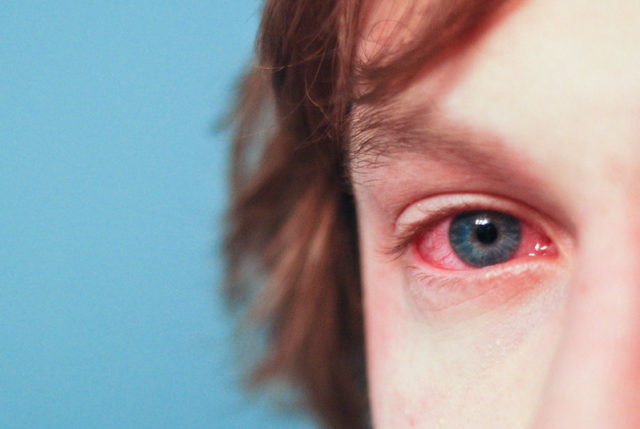
Allergy season is in full swing, evident in the stuffy noses and itchy eyes currently afflicting millions of people. Aldeyra Therapeutics is developing a drug that takes a new approach to eye relief and on Tuesday it reported pivotal clinical trial data that could support an FDA submission.
Aldeyra, based in Lexington, Massachusetts, is developing a drug for allergic conjunctivitis, which is the eye inflammation resulting from an immune response to pollen. The Aldeyra drug, an eye drop called reproxalap, is a small molecule designed to block reactive aldehyde species (RASP). RASP molecules play a role in inflammation that develops in the eye and elsewhere in the body.
Treatment options for allergic conjunctivitis include anti-inflammatory drugs, antihistamines, and mast cell stabilizers, a class of drugs that prevent the release of biochemicals that are related to allergy. Some of these medicines are available over the counter. But Aldeyra contends that these products have limitations. For example, the release of histamines lasts for 10 to 20 minutes after allergen exposure, so an antihistamine drug won’t address the eye itching beyond that time frame. Furthermore, the company notes that histamine is just one of the biological mediators of the condition.
In an investor presentation, Aldeyra said that in addition to providing a new way to treat allergic conjunctivitis in the post-histaminic phase, its drug could offer an alternative to topical steroids, which can have toxic effects on the eyes. To test its drug, Aldeyra constructed an “allergen chamber,” a controlled environment that mimics real-world exposure to airborne allergens. Before entering this chamber, the 95 clinical trial participants were randomly assigned to receive reproxalap or a vehicle, an eye solution that contained no active drug. Participants in the study were exposed to moderate-to-high levels of ragweed pollen continuously for about three-and-a-half hours.
Every 10 minutes, patients reported their eye itching and tearing scores and investigators assessed eye redness. At the 90-minute mark, when peak symptoms typically occur, participants were dosed again. The main goal of the study was to assess change in eye itching on a 4-point scale across 11 time points from 110 minutes to 210 minutes after entering the chamber.
In the patients who received reproxalap, Aldeyra reported that the scores showed a statistically significant reduction from baseline compared to those who received the vehicle. On the secondary goals of eye redness and eye tearing, Aldeyra reported that those who received the study drug also showed a statistically significant improvement in scores. Of the 95 clinical trial participants, Aldeyra said 89 completed the study and none of those who dropped out did so because of an adverse reaction to the drug. Across 14 clinical trials to date, Aldeyra said that its drug has been given to more than 1,200 patients without any safety or tolerability problems.
A separate Phase 3 test assessing reproxalap in patients with dry eye disease is still ongoing. Aldeyra said results from that study are expected in the second half of this year.
Aldeyra plans to meet with the FDA in the second half of 2021 to discuss the potential submission of a new drug application. In a statement, Todd Brady, president and CEO of the company, said that if approved, the company believes the drug has the potential to become the only topical, immune-modulating drug for the anterior part of the eye that could be used for chronic treatment.
Photo by Flickr user Andrew Goloida via a Creative Commons license







